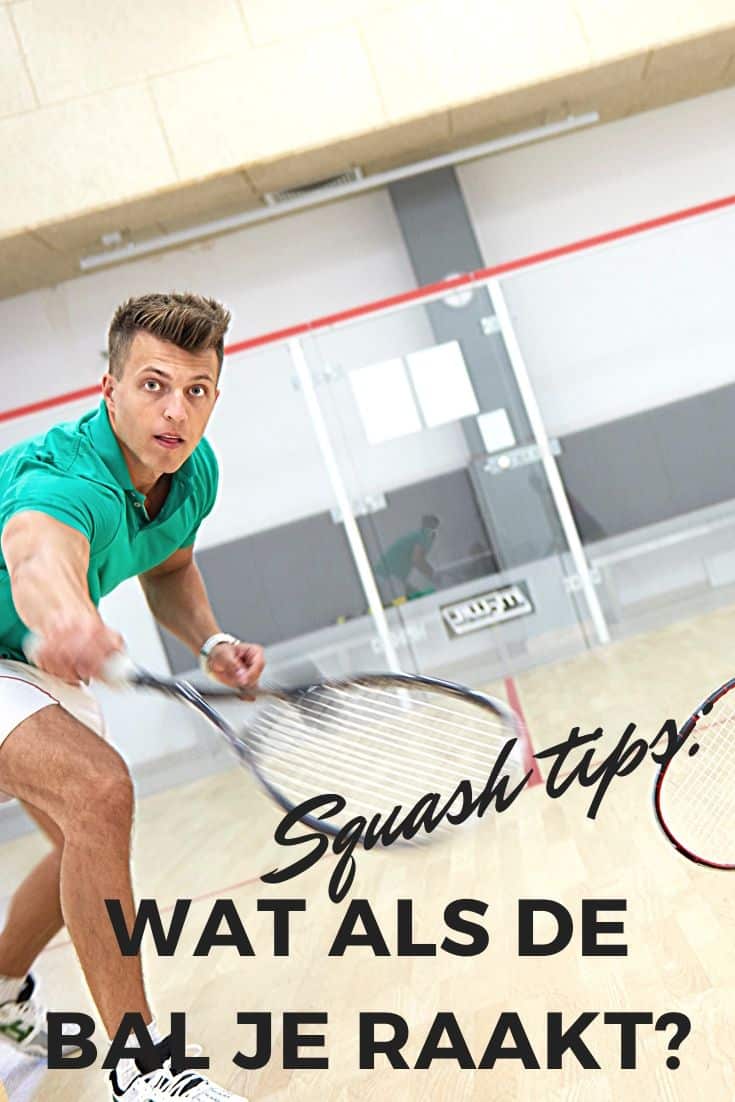I enjoy writing these articles for my readers, you guys. I don't accept payment for writing reviews, my opinion on products is my own, but if you find my recommendations helpful and you end up buying something through one of the links I may be able to receive a commission on that. More information
It would be good if in all circumstances there was a clear answer for the umpire to decide what happens if the ball hits you in squash, but that's not quite possible.
That is why it is important to be able to analyze what actually happened when a player is hit by the ball.
What happens when the ball hits you in squash?

The simple answer is that when the ball hits you, it's a point for the opponent if the ball would have been good directly through the front wall, must pass if the ball would have been good through the side wall and you win a point if the ball hits the front wall. would have been wrong.
It's just a bit more nuanced than that.
There are three rules that must be understood to better determine it: Line 9, 10 and 12, which then help the umpire to make an informed decision.
Lees meer: how exactly do you score in squash?
What we discuss in this comprehensive post:
3 rules around being hit by a ball in squash
Here's an interpretation of each of these rules:
Rule 9: Hitting an Opponent with the Ball
If a player strikes the ball which, before it reaches the front wall, touches the opponent or the opponent's racket or clothing, play ends.
If the return would have been good and the ball would have touched the front wall without touching another wall first, the player who hit wins the rally, provided the striker did not "turn".
If the ball had already hit or would have hit another wall had it not hit the player and the stroke would have been good, a let is played. If the trick would have been wrong, the player who hit loses the rally.
Rule 9: Spin
If the attacker has followed the round of the ball, or allowed it to pass around him or her – in either case hitting the ball to the right of the body after the ball passed to the left (or vice versa) – then the attacker has “turned”.
If the opponent is hit by the ball after the striker has turned, the rally is awarded to the opponent.
If the striker stops playing while turning for fear of hitting the opponent, a let is played.
This is the recommended course of action in situations where a player wants to turn but is unsure of the opponent's position.
Also read: which racket should I buy for my playing style in squash?
Rule 10: Further Attempts
A player, after attempting to hit and miss the ball, may make another attempt to return the ball. a
If a new attempt would have resulted in a good result, but the ball touches the opponent, a let is played.
If the return would not have been good, the striker will lose the rally.
Rule 12: Interference
The player is entitled to a let if he or she could have returned the ball and the opponent has made every effort to avoid the interference.
The player is NOT entitled to a let (ie loses the rally) if he or she could not have returned the ball, or accepted the interference and continued to play, or the interference was so minimal that the player had access to the ball unaffected.
The player is entitled to a stroke (i.e. wins the rally) if the opponent has not made every effort to avoid the interference, or if the player would have made a winning return, or if the player would have struck the opponent with the ball in motion directly on the front wall.


